
Search myodfw.com
The Norway rat is the largest member of the subfamily in Oregon. This heavy-bodied rat has a scantily haired, scaly tail shorter than the length of the head and body. The ears are membranous and lightly furred. The pelage is course, a grizzled brownish or rusty gray dorsally and dirty white to yellowish gray ventrally. Albino, melanistic, and spotted specimens are known to occur in free-living populations. This rat is distributed throughout the world in association with humans and in Oregon is found in most of the counties west of the Cascade Range and from some counties along the Columbia
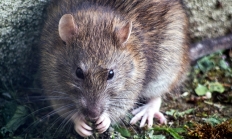

Piloted in 2014, the Tag Team program helps ODFW fish biologists better evaluate resident gamefish, bass, and stocked rainbow trout fisheries. It's also a chance for anglers to participate in fishery management and, perhaps, come away with up to $50.
Humpback whales are seen during their north and south migrations from northern waters to breeding grounds near Hawaii and also feeding offshore during the summer. Humpbacks have been documented travelling 3,000 miles between Alaska and Hawaii in as few as 36 days. They are usually five to 15 miles offshore, so they are most often seen by fishers. Humpback whales live in all major oceans from the equator to sub-polar latitudes. Humpbacks eat primarily krill and small fish and can consume 3,000 pounds of food a day. Humpbacks grow to 60 feet in length with a stocky body, an obvious
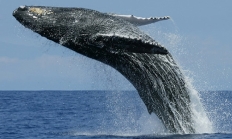
Features: These fish have dark blue backs, silver sides and bellies, and very long pectoral (side) fins. Albacore caught off the Pacific Coast are generally 21 to 30 inches long with the largest fish running about 35 pounds. Habitat: Tuna are pelagic species, meaning they spend their lives in the open ocean. Albacore generally show up 15-200 miles or more off the Pacific Coast in mid-July and stick around through September. Albacore are usually found where surface water temperatures are at least 59 degrees Fahrenheit and the water has a distinct clear blue color (this is where chlorophyll levels are
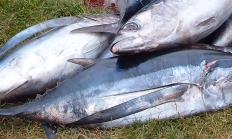
Oregon has 15 species of bats, and eight of those are Oregon Conservation Strategy Species. Strategy Species are those having small or declining populations, are at-risk, and/or of management concern. Some of Oregon's species migrate south in winter while some remain here and hibernate. Bats have echolocation which allows them to make high-pitched sounds then listen to the echo of those sounds to locate where objects are. Echolocation helps them find even the smallest insect. Fun facts about our bats Oregon's bats eat only insects. An adult bat eats about 1,000 insects every hour! Bats hang upside down because it

Hunter's Guide Hunter's Resources Hunter's Technique Hunter's Bounty
Online Learning
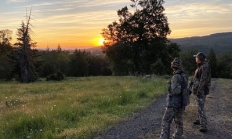
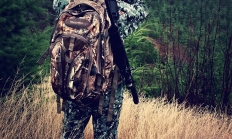
The bighorn sheep is a medium-sized, largely brownish bovid with a white rump patch, muzzle, venter, and rear portion of the legs. The tail is blackish brown on the exposed surface. The hooves are equipped with a rubberlike pad that facilitates negotiating rocky terrain. The ears are relatively small and somewhat pointed. Both sexes are equipped with horns; those of males are massive and spiral outward, whereas those of females are relatively thin, recurved, and mostly directed upward and posteriorly. Horn growth reflects nutritional status. Bighorn sheep are capable of moving with speed and agility through the precipitous terrain in


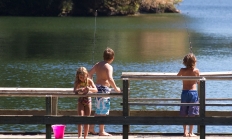
Features: Butter clams have oval and oblong shaped shells with heavy, thick valves and hinge. Their shells have fine concentric rings. When the shell is open a little, you can see the pale ruffled mantle reminiscent of a tuxedo. Like the gaper clam, they have their two siphons fused together into one "neck." Average adult size is 3-4 inches but can range up to 5 inches. Butter clams can live more than 20 years. Habitat: Butter clams can be found in a wide variety of substrates but prefer sand and gravel/cobble beaches. They live approximately 6-12 inches deep and can


NW BIG GAME HUNTING December 4, 2025 Currently open Fall bear, Cougar ( check current harvest numbers), Coyote, Deer and Elk ( Check regulations for specific dates and units) Upcoming season Elk season dates in the Hunting Regulations Announcements, resources 2025 Big Game Hunting Forecast Big game harvest statistics - You'll find links to population, harvest and point summary reports that can help you decide what hunts to apply for next season. Please report elk with hoof disease - If you see elk showing signs of elk hoof disease, including lame or limping elk or elk with damaged, injured, missing
Lizards are more like ancient reptiles than either snakes or turtles. There are more than 2,500 species of lizards known in the world and they range from legless, snake-like varieties to the better known, four-legged type with five toes on each foot and scaly skin. Most lizards lay eggs but some give birth to live young. Most eat insects and small animals; some eat plants. Many lizards are very fast and most can swim. Some can even "swim" through sand, just below the surface. Lizards don't like to be caught and several species will take some pretty drastic steps to
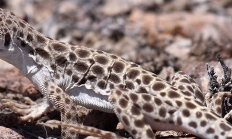
Nick Myatt, Region Manager Golden eagle research in northeast District wildlife staff in Wallowa County, in partnership with the U.S. Fish and Wildlife Service and the Nature Conservancy, began a pilot project to study the survival, movement, and reproductive success of golden eagles. During the pilot phase, ODFW staff tested methods of capture as well as telemetry units to determine feasibility for a longer-term study. The first capture event during this pilot project took place in mid-December 2024. USFWS provided four GPS units for this pilot year. The data from golden eagles captured in northeast Oregon during this pilot phase

Bonneville Hatchery was constructed in 1909. In 1957, the facility was remodeled and expanded as part of the Columbia River Fisheries Development Program (Mitchell Act)—a program to enhance declining fish runs in the Columbia River Basin. The hatchery underwent another renovation in 1974 as part of the U.S. Army Corps of Engineers' (USACE) mitigation of fish losses from the construction of the John Day Dam. In 1998, construction was completed on the Captive Broodstock Facility for the Grande Ronde Basin spring Chinook supplementation program.

Sperm whales inhabit all oceans of the world, and have been observed in Oregon waters from March through November. Sperm whales are usually found in deep off-shore waters so they are only occasionally seen off Oregon by fishers and birders on offshore trips. It is the largest of the toothed whales and possesses the largest brain of any animal with an enormous head to house it. Sperm whales have 20 to 26 large conical teeth found only in their lower jaw. A mature male can grow to 52 feet long with its head representing up to one-third of its length

Updated November 5, 2025 Subscribe for updates Starting Jan. 1, 2026, an Ocean Endorsement is needed for most recreational anglers fishing in the ocean. Check the Ocean Endorsement page for more information. Ocean Endorsement
